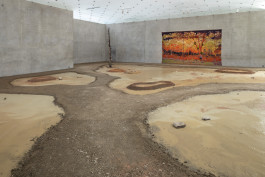
EXH 025 Unearthed Otobong Nkanga 2021/22
Header image:
Kunsthaus Bregenz
© Markus Tretter, KUB
Text: Kunsthaus Bregenz
How do we think about the ground we walk on, how to heal and protect it? Otobong Nkanga’s exhibition tells the (hi)story of the elements earth and water.
The Earth’s survival is reliant on water. Otobong Nkanga conveys such a message in four vibrant, large-scale tapestries depicting the entanglement between land and ocean. The woven works, hanging separately on each floor of Kunsthaus Bregenz, render the depths of the sea, the seasons, and climatic zones.
On the ground floor of KUB darkness prevails; a small pond near the glass wall glistens with life, as in Unearthed — Abyss, the first of four tapestries. A tree trunk rises from this shallow hollow, appearing to pierce the ceiling and penetrate the subsequent floors.
On the following two floors ropes perforate the now tapering trunk, with glass spheres tied to the cords and in the presence of the tapestries Unearthed — Midnight and Unearthed — Twilight. The interconnected, movable spheres are opulent glass objects that have been fabricated in Murano. The amorphous containers are climatecontrolled display cases, colored terrariums for various lifeforms, which Nkanga has filled with soil and plant samples. On the upper floor, the ragged, scorched top of the tree protrudes from loamy soil, overseen by Unearthed — Sunlight the last of the four tapestries. The ascent through Kunsthaus Bregenz becomes a journey through the exploitation of nature, a path towards desolation, yet one where islands of life may still exist and hope germinates.
Nkanga has also written poems, ingrained into earth slabs, for each of the four floors of Kunsthaus Bregenz. The monumental tapestries are unique originals that have been specifically conceived for the series of spaces at Kunsthaus Bregenz and its likewise massive concrete walls (...). The tapestries function like windows into a vivid world full of life on the periphery of a barren landscape. Colorful fish and shells populate coral reefs within the intense, tropical blue of a deep, pristine ocean. The fabrics are as precise as they are painterly; amongst the warp threads’ streaks of color, sometimes apparently swaying like maritime streams, rounded forms, spheres, celestial bodies, and poetic medallions appear, providing an insight into both maritime life and a particular, interconnective “way of thinking,” explains Nkanga.
Poems
Abyss, Midnight, Twilight
All following images:
Markus Tretter
Courtesy of the artist
© Otobong Nkanga, Kunsthaus Bregenz
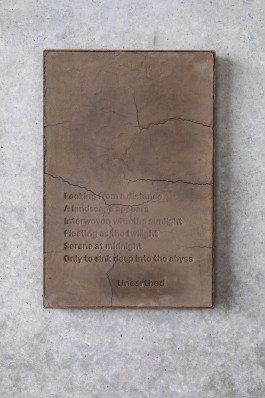
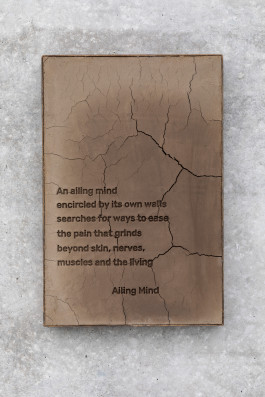
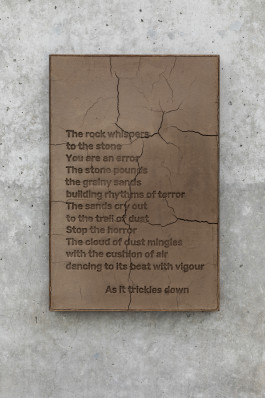
Ground floor
Abyss
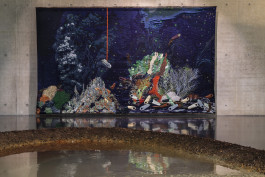
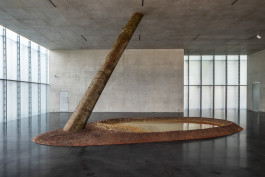
First Floor
Midnight
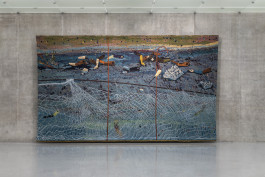
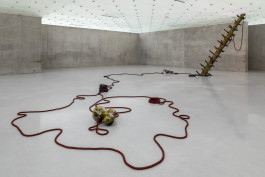
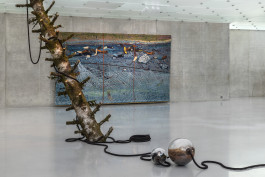
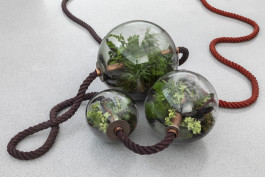
Second Floor
Twilight
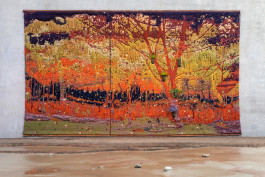
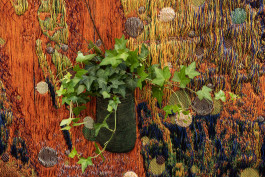
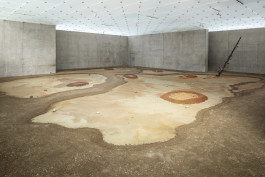
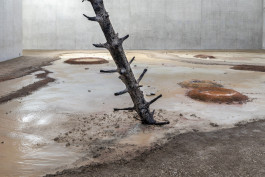
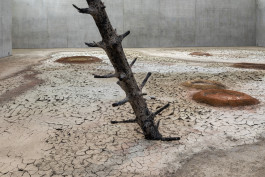
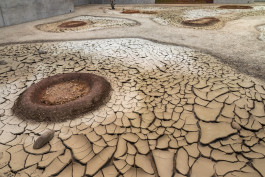
Related Projects
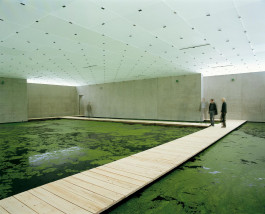
EXH 019 The Mediated Motion Ólafur Elíasson, Günther Vogt 2001
Header image: Kunsthaus Bregenz © Markus Tretter, KUB
Text: Studio Ólafur Elíasson
Responding to Peter Zumthor’s architecture for Kunsthaus Bregenz in Austria, Olafur Eliasson installed, in collaboration with the landscape architect Günther Vogt, a work that spanned all four levels of the building and led the viewer from one landscape situation to another. On the ground floor, visitors first encountered a collection of logs sprouting shiitake mushrooms (Lentinula edodes). Moving to the levels above, they came across a pond with floating duckweed (Lemna minor) on level one, which they could cross via a series of pontoons, and a floor of gently sloping, compressed soil on level two. On the top floor, a suspension bridge spanning a room full of fog terminated abruptly at a blank wall, forcing visitors to return along their original route. A staircase of roughly hewn wood was built on top of the existing concrete stairs, creating an unbroken transition from one landscape situation to the next.
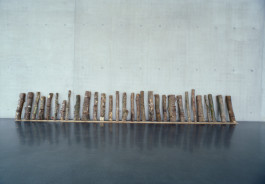
Ground Floor: Shiitake mushrooms on logs
All following images © Markus Tretter
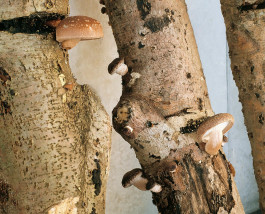
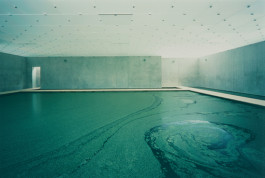
First Floor: Pond with floating duckweed
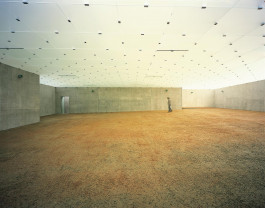
Second Floor: Sloping compressed soil
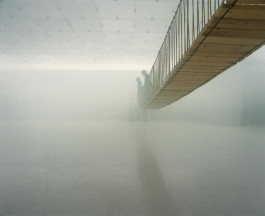
Third Floor: Room with fog and suspension bridge

© Vogt Landschaftsarchitekten
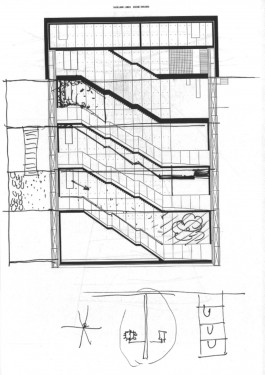
All following drawings © Ólafur Elíasson
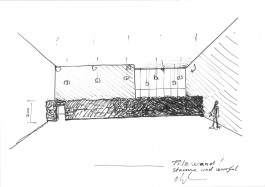
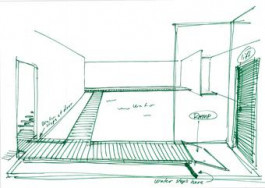
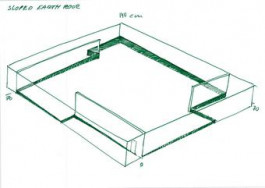
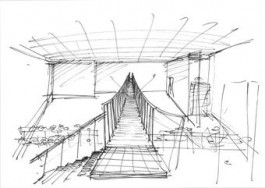
Related Projects




